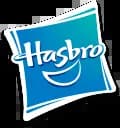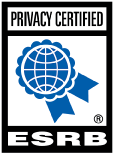Planet


Planet
We love world building here at Hasbro – and we think this world that we live in is pretty special. We strive to understand and address our environmental impacts and dependencies through data collection, research, and partnership engagement.
Sustainable Product and Packaging
Since 2020, Hasbro has released Mr. Potato Head Goes Green, Monopoly Goes Green, Play-Doh Grow Your Garden Toolset, Peppa Pig Wooden Deluxe Playhouse and the Nerf Super Soaker CP30-AP, XP50-AP and XP100-AP in which we used more sustainable materials throughout including plant-based or recycled plastics, FSC®-certified materials, and/or recycled paper-based materials. We take pride in our growing portfolio of sustainable products and are excited for what’s to come in the future.
Since 2021 we have continued to reimagine the ways to create more sustainable packaging offerings. Some highlights of our journey include eliminating wire ties from packaging, adding How2Recycle® labeling to help educate consumers about recycling Hasbro toy and game packaging, eliminating Styrofoam in new products and using recycled or sustainably sourced paper in our packaging and in-box content. We strive annually for 90% of paper and in-box content in our products to be made from recycled or sustainably sourced paper. We continue to make strides towards more sustainable packaging, including incorporating plant-based bioplastic components and limiting single-use virgin plastics where possible.
Product Disposal and Takeback
It’s hard to say goodbye to the toys and games we know and love. When you’re ready, Hasbro is committed to providing a sustainable option for consumers to responsibly recycle their toys and games. In some instances, product reuse may not be feasible, but upcycling materials can give the product a second life. In 2018, Hasbro was the first toy company to launch a nationwide Toy Recycling Program in the United States. Through this program consumers can send their well-loved Hasbro toys and games to TerraCycle® to be recycled into materials used in play spaces, park benches, or other upcycled products at no cost to the consumer. Since the program’s launch, Hasbro has helped divert more than 45,000 pounds of waste from landfills!
For more information, visit our Toy Recycling Program page.

© 2025 Hasbro. All rights reserved. All audio, visual and textual content on this site (including all names, characters, images, trademarks and logos) are protected by trademarks, copyrights and other Intellectual Property rights owned by Hasbro or its subsidiaries, licensors, licensees, suppliers and accounts.

